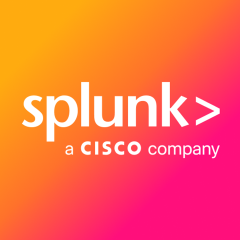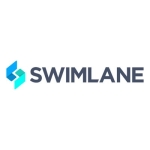We utilize Splunk SOAR to automate our incident response process. I am the sole engineer in my current organization, responsible for working on Splunk to automate the incident response process followed by our team. This involves investigating various incident response procedures established within our security operations center.
The main problem we want to solve is the time it takes to invoice tickets and remediate incidents. Therefore, we aim to reduce that time. If our analysts manually handle and investigate each incident, it will take longer compared to using this solution, which automates most of the processes. Whenever an incident occurs, the playbook and Splunk automatically initiate the necessary actions to gather the required data, enabling the analyst to make informed decisions and address the incident promptly.
Creating a playbook using the Solutions Playbook Editor, is relatively easy if we possess some knowledge of Python code and the ability to write various types of flow diagrams.
The visibility of the solution's playbook viewer is excellent. There is adequate documentation that assists individuals in learning how to utilize the playbook to construct solutions.
Splunk SOAR's ability to integrate with other systems and applications in our environment is straightforward. It has numerous capabilities to integrate with various security tools, as it supports open APIs. If the solution supports the API, we only need to write the corresponding APIs in the pipeline code and utilize those API tools to construct the integration, enabling us to take action accordingly.
The most significant improvement I have observed is time-saving in the Security Operations Center incidents. We receive approximately a thousand to eleven hundred incidents per day, and if we were to manually investigate these incidents, we would require a team of ten to twelve people. However, by utilizing Splunk SOAR, we are able to handle the investigation of these thousand alerts with just six or seven people.
Splunk SOAR is not difficult to use in an investigation; it depends on the use case. I haven't encountered any issues with the implementation of the case solution, and there don't seem to be any limitations in that regard.
Splunk SOAR assists us in reducing the volume of security events. Whenever an incident occurs, the playbook initiates actions simultaneously with its generation in our security operations center. These incidents are automatically handled by the playbook, while incidents requiring manual intervention are assigned to our analysts. All other incidents are handled automatically through Splunk SOAR playbooks. Splunk SOAR has reduced the security event volume by forty-five percent.
Our mean time to detect has been drastically reduced. Before Splunk SOAR our security operation center, analysts worked on a queue. Whenever an alert was received, it was placed in a queue, and the incidents were investigated one by one. However, with the implementation of Splunk SOAR, we now have instant knowledge and analysts can start investigating more effectively. The required data is already gathered by the playbook itself, aiding analysts in making more accurate decisions in less time. This has resulted in a reduction of our mean time to detection by at least eighty percent. Previously, without Splunk SOAR, we experienced significant mean time to detect because analysts had to focus on one incident at a time, leaving other incidents waiting. Now, there is no need for incidents to wait for an analyst to take over. The playbook automatically gathers the data, allowing the analyst to have all the necessary information as soon as they start, enabling them to make prompt decisions.
Splunk SOAR has helped reduce our mean time to resolve. The resolution of incidents sometimes depends on different teams that need to investigate and send notifications for action. However, the notification of those incidents has been significantly reduced, and we can confidently say that we have achieved a fifty percent reduction in our mean time to resolve.
Fifty percent of our IT staff's time is saved through using Splunk SOAR, and we can utilize that time to work on the other project we have.
Splunk SOAR has saved our organization forty-five percent of our time.
The best feature is the integration and the custom Python code that we can write. Splunk SOAR provides us with both of these capabilities, allowing us to integrate different security solutions with Splunk SOAR and take remediation actions directly on those security tools. Additionally, we can write our own Python code, which can be used and embedded in a Splunk SOAR playbook, enabling us to utilize that code directly within the solution itself.
There is a lot of room for improvement with the UI.
I would like to have more integrations with cloud technologies and functionalities such as AI within Splunk SOAR.
I have been using Splunk SOAR for five years.
Splunk SOAR is a hundred percent scalable.
The initial setup was straightforward and took approximately three hours. Four individuals from our network team and one individual from the Splunk personal service team were required for the deployment as we needed to configure the server.
We have observed approximately a forty-five percent return on investment with Splunk SOAR.
Splunk SOAR is more expensive compared to other options for SOAR.
We assessed various open-source options prior to choosing Splunk SOAR, such as Securonix SOAR and Shuffle.
I would rate Splunk SOAR a seven out of ten. The solution necessitates expertise in Python coding, which is challenging to find in individuals. Additionally, Splunk SOAR lacks sufficient AI integration.
Before using Splunk SOAR, it took us approximately six hours to block certain IPs on our firewalls. However, after implementing Splunk SOAR, we were able to accomplish the same task within just five minutes.
We deployed Splunk SOAR on a single server.
We have around nine people that use Splunk SOAR in our organization.
Maintenance is sometimes required based on the incident volume we receive. If we experience a higher volume, we need to maintain the RAM and other components in our server. Therefore, it is important for us to exercise caution in this regard.
I highly recommend Splunk SOAR for individuals seeking to automate the incident response process in their security operation centers.




















